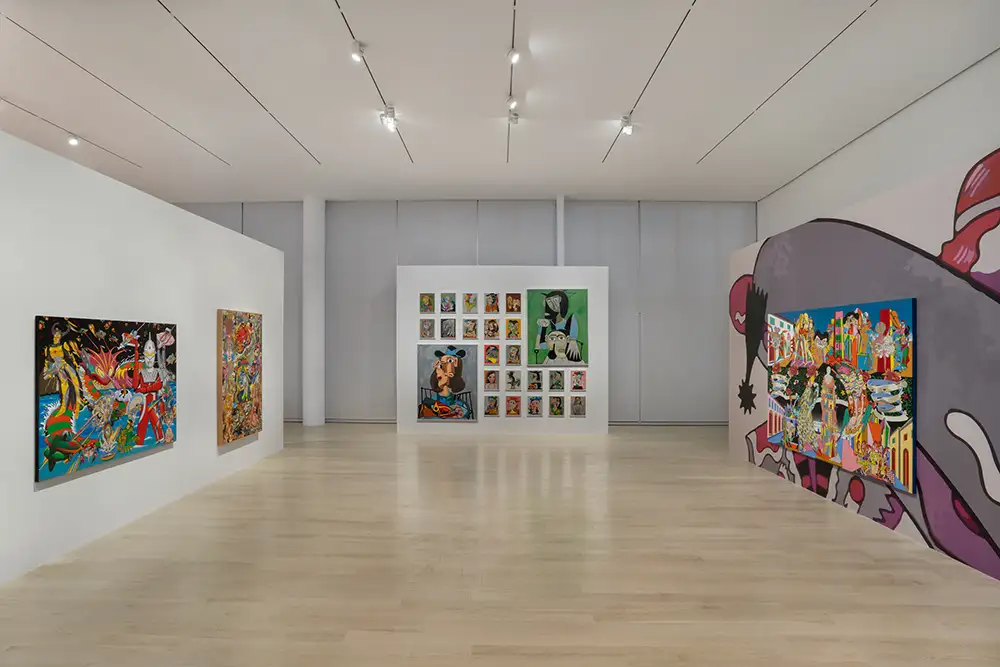In Shilun’s Janus series, masked figures and dreamlike settings unfold in oil paint that feels both ancient and futuristic. “There’s a quiet wildness to these pieces,” Gartenfeld says. They invite reflection without explanation.” The allegorical works—emotive, strange, tender—are as layered as their creator’s cultural references, spanning Chinese mythology, manga, and art history. “They’re personal fables,” he explains. “But they leave just enough unsaid to make space for the viewer.”
That sense of thought-provoking exploration carries into Spring 2025, with exhibitions devoted to Olga de Amaral, Miriam Schapiro, Mildred Thompson, and Sanaa Gateja. Schapiro’s early paintings, developed in collaboration with California-based science labs in the 1960s and 70s, intersect hard-edge abstraction with feminist thought and digital experimentation. Thompson’s work— spanning painting, sound, and sculpture—traces a lifelong conversation between physics and philosophy. Gateja’s large-scale tapestries incorporate recycled materials and community labor, offering meditations on ecology, tradition, and transformation.
“Each of these artists expanded the limits of their form and their field,” Gartenfeld says. “And many of them are only now getting the institutional platforms they deserve.”
Since ICA Miami’s founding in 2013, Gartenfeld has helped position the museum as both an international art destination and a foundational site for scholarship and education. Programs for teens and university students provide structured, curriculum-rich exposure to contemporary art, and the museum’s commitment to publishing and commissions has made it a generator of original work. Admission is free, year-round.
In 2024, ICA Miami also acquired a second building—previously owned by collectors Carlos and Rosa de la Cruz—which will allow the museum to double its exhibition space. The new venue will be used for expanded programming, a deeper rotation of ICA’s collection, and large-scale media nstallations. “This expansion gives us the ability to show the stories we’ve been collecting,” says Gartenfeld. “It’s a long-term investment in the city and its artists.”
Miami, now regarded as a city for collectors and fairs, has become a place where artists can build full careers. ICA’s early acquisitions of works by artists like Bull, Shilun, and Rosemarie Cromwell have helped shape that trajectory, placing local names in an international context without compromising their roots.

“Our role is to support artistic voices at pivotal moments,” Gartenfeld says. “That means first exhibitions, acquisitions, commissions—whatever will push the artist and their audience forward.”
That curatorial momentum continues into ICA’s tenth year and beyond. With exhibitions that stretch across disciplines, geographies, and generations, the museum has become a cultural compass—always looking outward while nurturing its own community with care.
“There’s a lot still ahead,” Gartenfeld says. “The challenge is to stay curious and keep building.”

 “Our role is to support artistic voices at pivotal moments,” Gartenfeld says. “That means first exhibitions, acquisitions, commissions—whatever will push the artist and their audience forward.”
“Our role is to support artistic voices at pivotal moments,” Gartenfeld says. “That means first exhibitions, acquisitions, commissions—whatever will push the artist and their audience forward.”